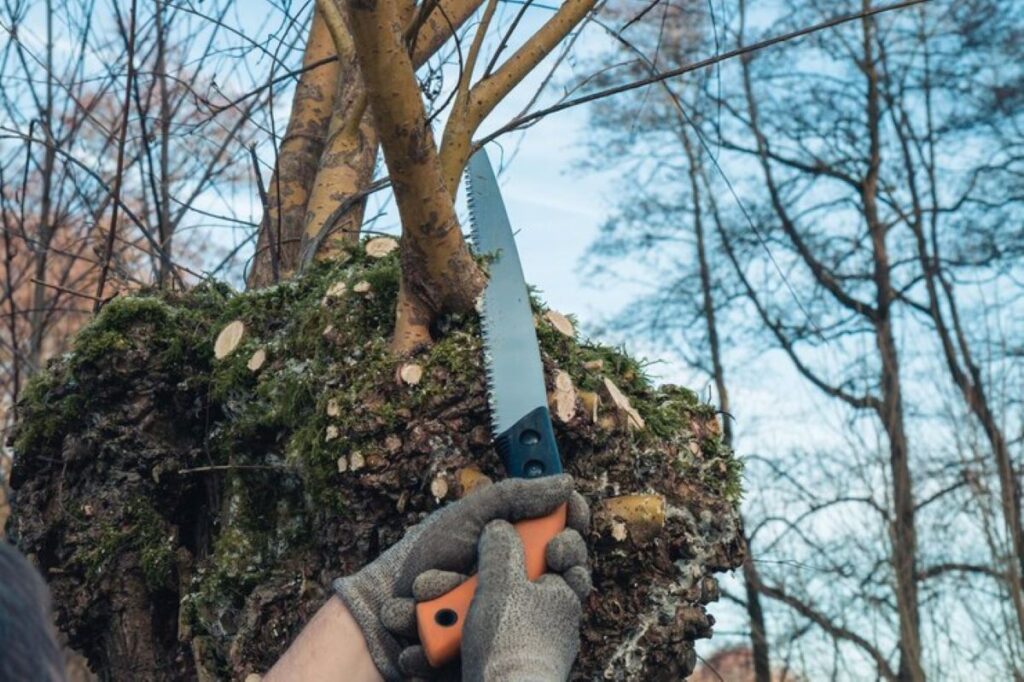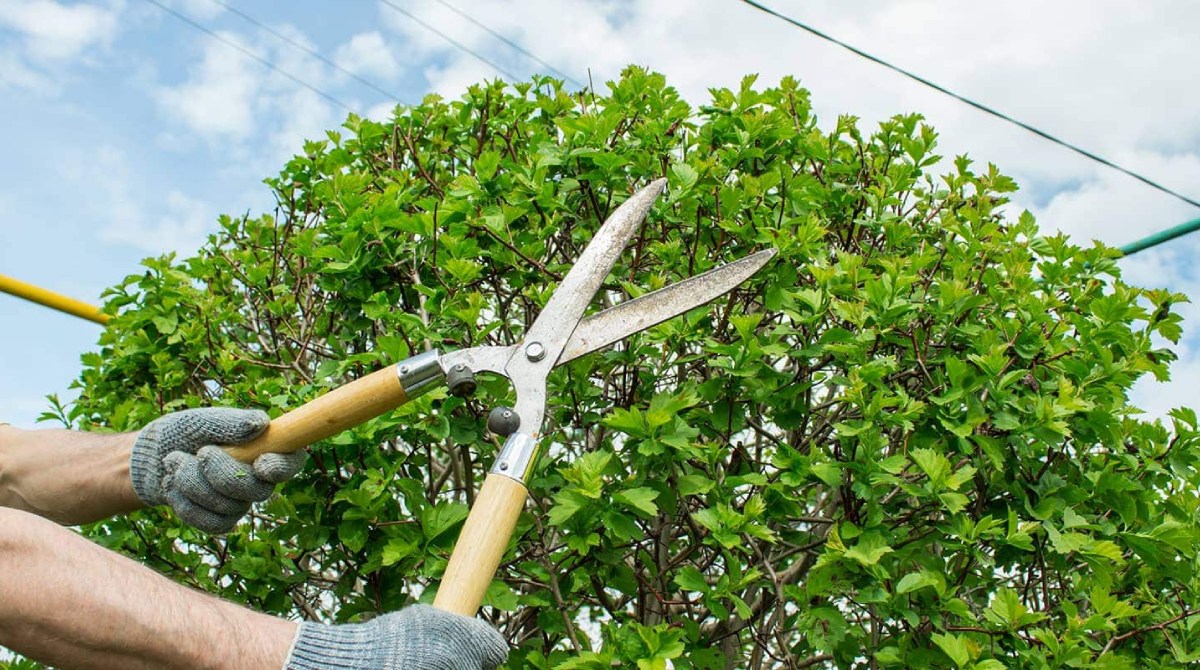Tree pruning is an essential part of maintaining healthy, safe, and visually appealing trees. While many people understand the importance of tree care, fewer are aware of the costs involved and when pruning becomes a worthwhile investment. This article aims to provide insights into tree pruning, the factors affecting its cost, the average prices in the UK, and the long-term benefits that make it a sensible expenditure.
The basics of tree pruning
Tree pruning involves the selective removal of specific parts of a tree, such as branches, buds, or roots. This process aids in directing the tree’s growth, improving its structure, and enhancing its overall health. Proper pruning techniques can prevent disease, ensure safety, and prolong the life of the tree.
What is tree pruning and why is it necessary?
Tree pruning is essential for several reasons. A prominent reason is to maintain the health of the tree by removing dead or diseased branches, which can hinder overall growth and lead to decay. Pruning can also encourage flowering and fruit production by directing energy to healthier parts of the tree.
In addition to health benefits, pruning improves the overall aesthetics of the tree and your landscape. Well-maintained trees can enhance property value and curb appeal, making tree pruning a valuable investment for homeowners. Furthermore, regular pruning can help establish a strong framework for young trees, allowing them to develop a robust structure that can withstand adverse weather conditions. This proactive approach not only safeguards the tree’s longevity but also contributes to a safer environment for people and property nearby.
The different types of tree pruning
There are several types of tree pruning, each serving different purposes. These include:
- Thinning: Removing select branches to reduce the density of the tree’s canopy.
- Heading: Cutting back a branch to a bud, promoting new growth in a specific direction.
- Raising: Removing lower branches to provide clearance for pedestrians and vehicles.
- Reduction: Reducing the height or spread of a tree while maintaining its shape.
Understanding these types of pruning helps homeowners communicate better with tree surgeons regarding their needs and expectations. Additionally, it is important to consider the timing of these pruning techniques, as different species of trees may respond better to pruning during specific seasons. For instance, many flowering trees benefit from pruning immediately after their blooms have faded, while others, such as oaks, are best pruned in late winter to avoid attracting pests. This knowledge can significantly enhance the effectiveness of the pruning process and ensure that the trees flourish in their environment. Visit https://www.ryde.nsw.gov.au/Environment-and-Waste/Trees/Tree-Pruning-Guide to get a tree guide about tree pruning.
Factors influencing the cost of tree pruning
The cost of tree pruning can vary significantly based on several factors. Understanding these elements can help homeowners budget for this crucial service more effectively.
Size and number of trees
One of the most significant factors affecting pruning costs is the size of the tree. Larger trees require more time, expertise, and equipment to prune safely and effectively. Additionally, the number of trees being pruned can influence costs—pruning multiple trees at once may result in bulk pricing discounts compared to addressing each tree individually.
Tree species and condition
The species of tree also plays a role in determining the cost of pruning. Certain species may be more challenging to prune due to their growth habits or structural characteristics, requiring specialised knowledge and equipment. Furthermore, the overall condition of the tree impacts costs; a tree in distress may need more extensive pruning to ensure its health compared to a healthy tree.
Location and accessibility
Location is another crucial factor. Trees located in hard-to-reach areas, such as near power lines or in cramped urban settings, may incur additional costs due to the need for specialised equipment or additional safety measures. A tree surgeon must assess the accessibility of the site when providing a quote.
Season and timing
The time of year can also influence the cost of tree pruning. Certain seasons are more favourable for pruning specific species, with late winter or early spring often being ideal for many deciduous trees. Scheduling pruning during peak seasons may lead to higher costs due to increased demand for tree services. Conversely, off-peak times may offer opportunities for discounts, as tree surgeons often seek to fill their schedules during quieter months.

Experience and qualifications of the tree surgeon
The expertise of the tree surgeon can significantly impact the cost of pruning services. Highly experienced and qualified professionals may charge a premium for their skills, but this often translates to a higher quality of work and better outcomes for the trees. It is essential for homeowners to consider the qualifications and reputation of the tree surgeon, as investing in a skilled practitioner can lead to long-term benefits for the health and aesthetics of their trees.
Average costs for tree pruning in the UK
Understanding the average costs associated with tree pruning can help homeowners anticipate their expenses and make informed decisions regarding their tree care.
Cost per tree size
In the UK, the cost of pruning can range significantly based on tree size:
- Small trees (up to 3 metres): Typically range from £70 to £100.
- Medium trees (3 to 6 metres): Generally between £100 and £300.
- Large trees (over 6 metres): Can range from £300 to £700 or more, depending on the complexity of the job.
This price range reflects the various factors previously discussed, including species, health, and location. Additionally, the time of year can also influence costs, as certain seasons may be more favourable for tree pruning. For instance, late winter or early spring is often recommended for many tree species, as this is when they are still dormant, allowing for healthier regrowth. Homeowners should consider scheduling their pruning during these optimal times to ensure the best results for their trees.
Hourly rates for tree surgeons
Tree surgeons in the UK often charge hourly rates, which can vary from £40 to £120 per hour. The rate usually depends on the surgeon’s experience, qualifications, and the region in which they operate. Homeowners seeking tree pruning services can inquire about both hourly rates and flat fees to determine the most cost-effective option for their situation. It’s also worth noting that some tree surgeons may offer package deals for multiple trees or ongoing maintenance, which can provide additional savings. Furthermore, when hiring a tree surgeon, it is advisable to check their credentials and ask for references or reviews from previous clients to ensure that you are selecting a reputable professional who will carry out the work safely and effectively.
The long-term benefits of tree pruning
While the initial costs of tree pruning may seem high, the long-term benefits often outweigh the expenses. A healthy, well-pruned tree can enhance both the environment and the homeowner’s property value.
Health benefits for the tree
Regular pruning helps maintain the health of the tree by promoting new growth and minimising disease risks. By removing dead or infected branches, pruning allows for better air circulation and sunlight penetration, essential for a tree’s vitality. This proactive approach can prevent costly remedial measures later, ultimately saving money in the long run.
Moreover, pruning encourages the development of a strong structure, which is crucial for the tree’s longevity. By selectively thinning out branches, the tree can allocate its resources more efficiently, leading to healthier foliage and robust growth. This not only enhances the tree’s resilience against pests and diseases but also contributes to its overall aesthetic appeal, making it a more attractive feature in any garden or landscape.
See Also : A Guide to Choosing Reliable Tree Pruning Services Near Me
Safety benefits for your property
Pruning also enhances safety. Overgrown branches pose risks, particularly during storms or high winds, as they can break and cause damage to property or injure individuals. Regular maintenance helps mitigate these hazards, providing peace of mind for homeowners and their families.
In addition to preventing physical damage, well-pruned trees can also reduce the risk of accidents caused by falling branches or obstructed views. This is especially important for properties located near roads or pedestrian pathways, where visibility can be compromised by overgrown foliage. By ensuring that trees are kept in check, homeowners can create a safer environment for both residents and visitors alike, fostering a sense of community and responsibility.
Aesthetic and property value benefits
Aesthetically, well-maintained trees contribute significantly to the beauty of a property. Curb appeal is essential for homeowners planning to sell, as prospective buyers often make decisions based on first impressions. Pruned trees can complement landscaping and create an inviting atmosphere, enhancing property value.
Furthermore, the presence of healthy, well-pruned trees can have a positive impact on the local ecosystem. They provide habitats for various wildlife species, contributing to biodiversity and creating a balanced environment. This not only enriches the natural surroundings but also adds to the charm of a neighbourhood, making it a more desirable place to live. As such, investing in tree pruning not only benefits individual properties but also enhances the overall appeal of the community.
In short, investing in tree pruning ensures that trees remain healthy, safe, and beautiful, fostering a welcoming and valuable outdoor space.

Deciding when tree pruning is worth the investment
When considering whether to invest in tree pruning, homeowners must assess various factors that can guide their decision-making process.
Assessing the health and safety risks
First and foremost, evaluating the health and safety of the trees is crucial. Professional tree surgeons can provide valuable insights into the current condition of the trees in question. If there are signs of disease or structural instability, the need for pruning becomes critical.
Additionally, consider the surrounding environment. Trees that could potentially cause property damage or pose safety risks during adverse weather conditions should be prioritised for pruning.
Considering the aesthetic impact
Homeowners should also consider the visual appeal of their property. If trees appear unkempt or are overgrown, this can detract from overall landscape aesthetics. Regular pruning not only improves tree health but significantly enhances visual appeal and sets a positive tone for the property.
Evaluating the potential property value increase
Finally, evaluating the potential increase in property value is essential. A well-maintained landscape featuring healthy trees can positively impact resale value. By investing in tree pruning, homeowners not only enhance their current living experience but can also position their property favourably in the real estate market.
In conclusion, understanding tree pruning costs and the various factors influencing these costs can help homeowners make informed decisions. When done correctly, tree pruning can yield long-term benefits that far exceed the initial investment, making it a worthy consideration for any homeowner.

